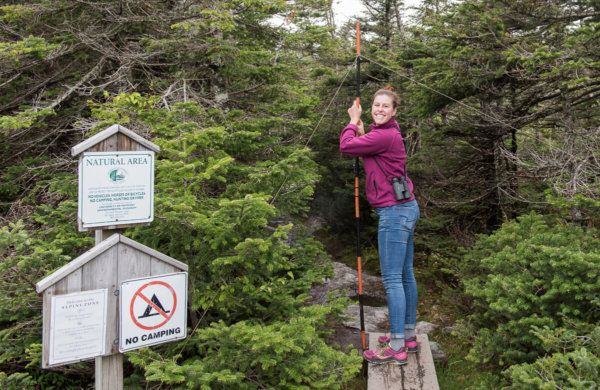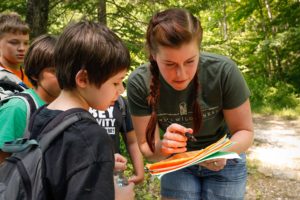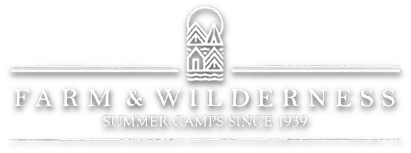By Elizabeth Morse
“The hills in their glorious height, surround us by day and by night. Sing praise to the hills.”

The hills surrounding the Woodward Reservoir became my home in the summer of 2006. That was the summer I became a camper at Indian Brook. When I was diagnosed with Type 1 diabetes at the age of 11, I attended a camp for juvenile diabetics for two summers to learn the ropes, so to speak. With two summers under my belt, I had mastered the art of testing my blood sugar and injecting myself with insulin, and the program offerings of kickball and games of Marco polo were less than inspiring. I wanted adventure. I wanted exploration. I wanted to learn to survive in the wilderness, despite my less than wilderness ready pancreas.
My desire for a more wilderness focused experience, as well as some significant research by my mother, led me to Farm & Wilderness and my first summer at Indian Brook. Needless to say, I loved it. Every day was different – one minute the cows had escaped to the waterfront and the next, we were chopping wood to cook dinner for the entire camp over an open fire. And yet there was a comforting rhythm to life at Indian Brook. I learned what it was to have complete contentedness. And I learned what it meant to be part of a community.
At Farm & Wilderness, we talk a lot about this concept – “community.” But I think there is an important distinction between the type of community I encountered at Farm & Wilderness and what we mean when we talk about community in the wider world. When we think of community, we usually think of people. The Oxford Dictionary defines community as,
“a group of people living in the same place or having a particular characteristic in common.”
 Both in the wider world, and at Farm & Wilderness, we often talk about communities that are defined by common identities like religion, race, sexual orientation, and much more. The many members of these varied communities come together to make up the vibrant Farm & Wilderness community. Farm & Wilderness wouldn’t be Farm & Wilderness without the people.
Both in the wider world, and at Farm & Wilderness, we often talk about communities that are defined by common identities like religion, race, sexual orientation, and much more. The many members of these varied communities come together to make up the vibrant Farm & Wilderness community. Farm & Wilderness wouldn’t be Farm & Wilderness without the people.
But what I feel is so unique about Farm & Wilderness is that our conception of community is even broader than its human components. As a camper at Indian Brook and Tamarack Farm, and later as a counselor at Timberlake, the community I was a part of at Farm & Wilderness was biological. In Biology, a community is defined as,
“an interacting group of various species in a common location.”
While biological communities are the subject of lifetimes of academic study, I guarantee every camper or staff member understands what it is to live in the Farm & Wilderness biological community. Whether it’s the camper who hides candy from their counselors, only to find their backpack raided by the resident cabin mouse or the counselor who’s chosen to leave the spider webs around their bunk to help keep mosquitos at bay, we all have our stories in which the natural world is as much a part of the Farm & Wilderness community as the people.
Belonging to this richer, more expansive type of community was a profound experience for me. It blew up and reformed my conception of the natural and human worlds as separate entities and it informs the way I approach my work in conservation today. Today, I work for organizations that assist both grassland and forest landowners in Vermont to protect and steward their properties for wildlife AND humans. We view humans as part of, rather than separate from, the local biological community; humans whose needs must be considered in conjunction with the needs of the non-human community members to achieve lasting, effective, and inclusive conservation.
Balancing community needs can be hard and take lots of time, but after all, isn’t work just love made visible?




